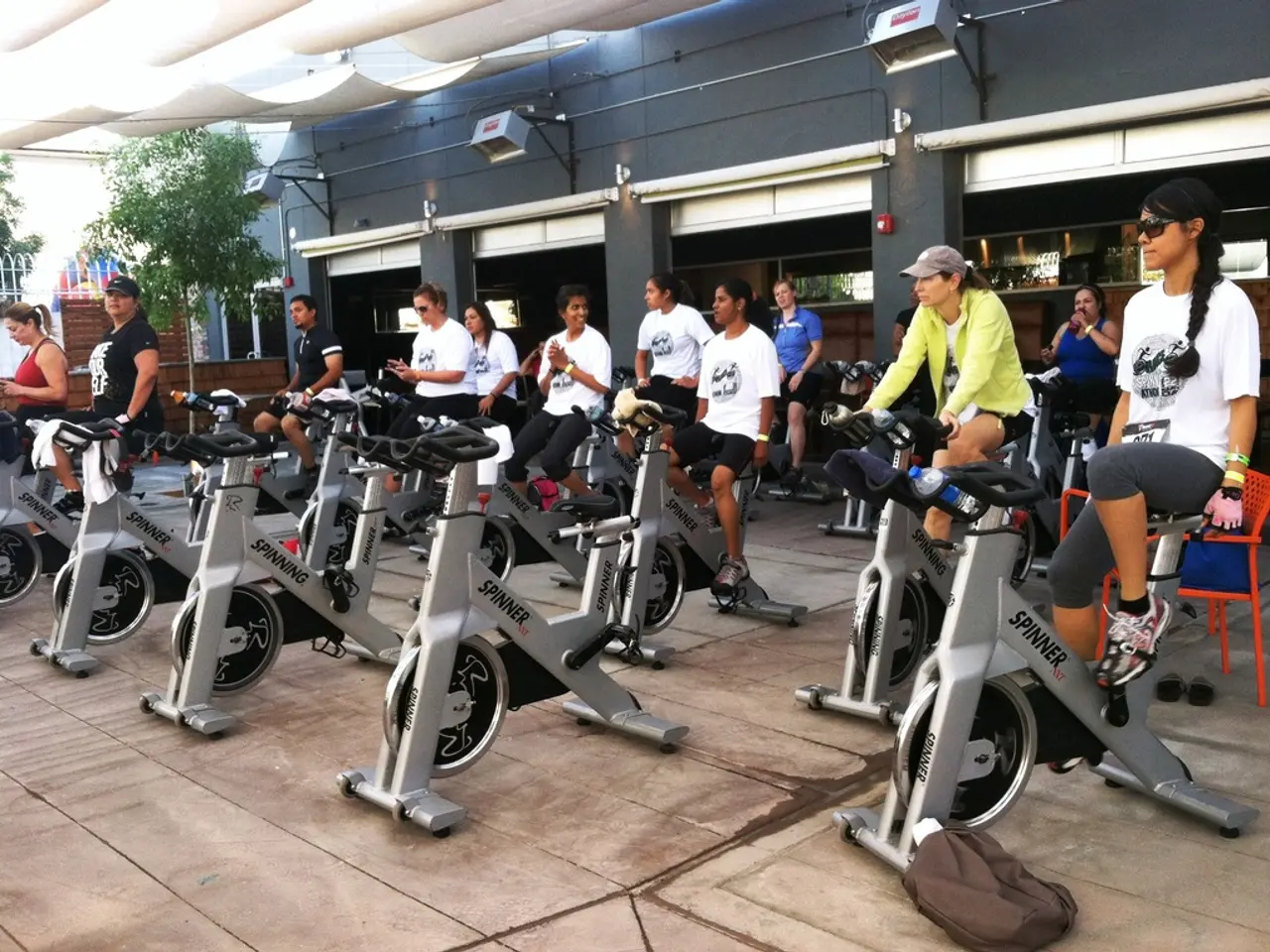Asthma Attacks Triggered by Physical Exertion: Identifying Signs, Root Causes, and Measures to Prevent
Exercise-Induced Bronchoconstriction (EIB) is a common condition that affects both individuals with asthma and those without. EIB refers to the transient narrowing of the airways that occurs after physical activity, which can lead to symptoms such as coughing, wheezing, tightening of the chest, shortness of breath, and decreased endurance in exercise[1][4][5].
While exercise does not directly cause asthma, it can trigger symptoms, including an asthma attack, in people who already have the condition[1]. EIB is more prevalent among people with asthma, with up to 90% of them experiencing it during exercise[1].
Certain sports are more likely to trigger asthma symptoms than others, particularly activities that require very deep breathing[2]. Cold, dry air is more likely to trigger EIB than temperature, and environmental pollutants can further aggravate symptoms[1][5]. Other risk factors include poorly controlled asthma, oral breathing, personal or family history of allergic or cardiovascular conditions, and urbanization[1].
A multi-faceted approach is recommended for managing and preventing EIB, especially in people with asthma[5]:
1. **Pharmacological Interventions** - Short-acting beta-agonists (SABAs), such as salbutamol or terbutaline, are used before exercise to prevent airway narrowing[5]. - Long-acting beta-agonists (LABAs), like salmeterol or formoterol, may be prescribed for more persistent symptoms, often in combination with inhaled corticosteroids (ICS) such as budesonide or fluticasone[5]. - Inhaled corticosteroids are used for chronic asthma management, helping to reduce airway inflammation and sensitivity.
2. **Non-Pharmacological Approaches** - Gradual warm-up and cool-down exercises can reduce the severity of EIB symptoms[5]. - Diaphragmatic breathing or yoga may help manage airflow and symptoms[5]. - Masks or heat and moisture exchangers (HMEs) can help humidify inhaled air during exercise[5].
3. **Lifestyle Modifications** - Avoid exercising during peak pollution times or in extremely cold/dry conditions[5]. - Choose indoor environments with better air quality or use filtered masks if necessary[5]. - Consider sports or exercises like swimming or cycling, which may be less likely to trigger symptoms[5].
Anyone who experiences regular EIB should speak with their healthcare provider, especially if any symptoms do not subside quickly or respond well to a rescue inhaler. Preventive measures and medications can help manage asthma symptoms during or after exercise. Breathing heavily through the mouth can trigger asthma symptoms, so it is essential to maintain proper breathing techniques during exercise[5].
In people with severe asthma or asthma that is not managed effectively, EIB can result in serious and even life-threatening complications. It is crucial to consult a doctor to identify the best ways to manage asthma symptoms, including any related to exercise.
[1] Global Initiative for Asthma (GINA). (2021). Exercise-induced bronchoconstriction. Retrieved from https://www.ginasthma.org/content/exercise-induced-bronchoconstriction/ [2] Asthma UK. (2021). Exercise and asthma. Retrieved from https://www.asthma.org.uk/about-asthma/what-is-asthma/exercise-and-asthma/ [3] Mayo Clinic. (2021). Exercise-induced bronchoconstriction. Retrieved from https://www.mayoclinic.org/diseases-conditions/exercise-induced-bronchoconstriction/symptoms-causes/syc-20352405 [4] American Academy of Allergy, Asthma & Immunology. (2021). Exercise-induced bronchoconstriction. Retrieved from https://www.aaaai.org/conditions-and-treatments/library/asthma-library/exercise-induced-bronchoconstriction [5] National Heart, Lung, and Blood Institute. (2021). Exercise and Asthma. Retrieved from https://www.nhlbi.nih.gov/health-topics/exercise-and-asthma
- Even though exercise does not directly cause asthma, it can exacerbate symptoms in individuals who already have asthma, potentially leading to an asthma attack.
- Pharmacological interventions, such as short-acting beta-agonists (SABAs) or long-acting beta-agonists (LABAs), are often used for managing and preventing Exercise-Induced Bronchoconstriction (EIB), especially in people with asthma.
- Non-pharmacological approaches, like gradual warm-up and cool-down exercises, diaphragmatic breathing, or yoga, may help reduce the severity of EIB symptoms.
- Chronic asthma management involves lifestyle modifications, including avoiding exercise during peak pollution times, choosing indoor environments with better air quality, and considering sports or exercises like swimming or cycling, which may be less likely to trigger symptoms.




